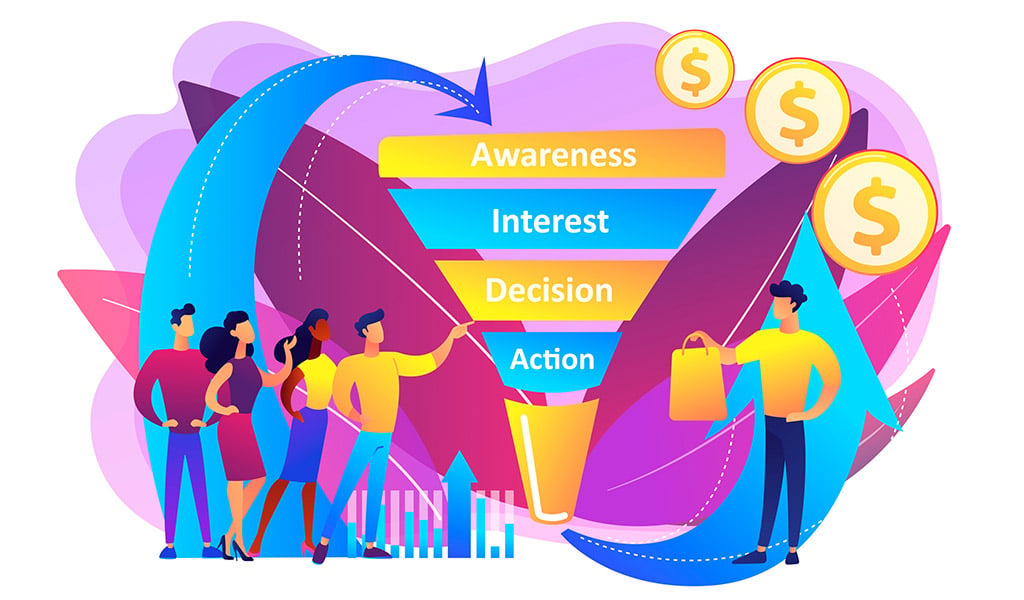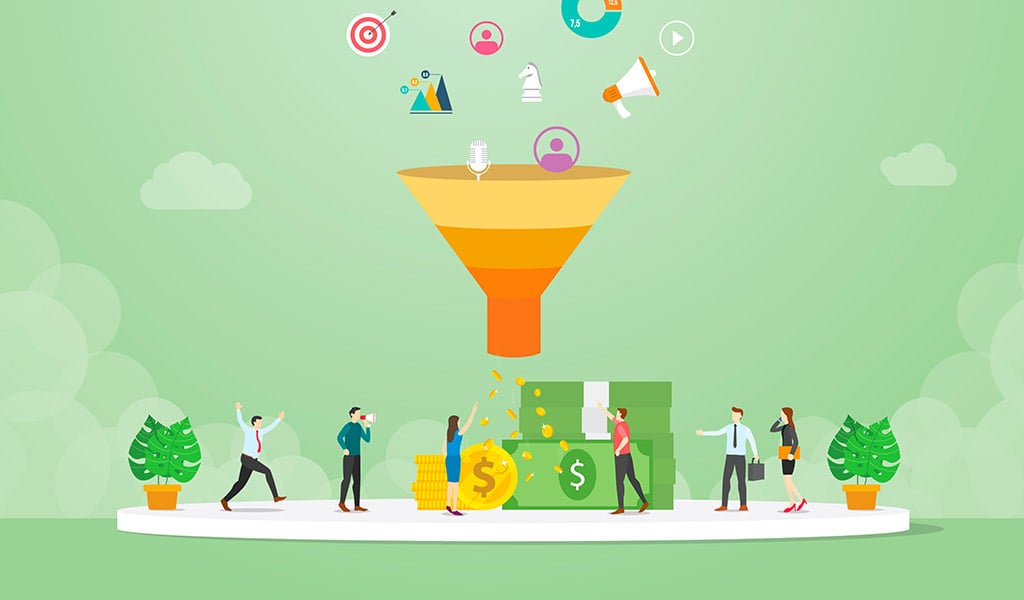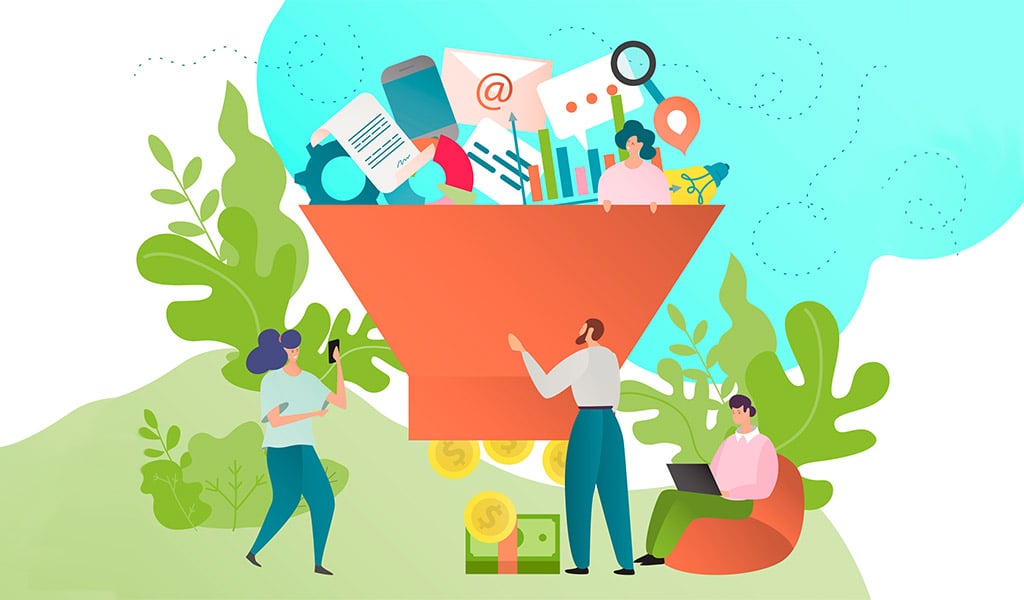
There are so many funnels, processes, guides, workflows, and more involved in the business world today. The reason for this is simple – In 2020, we’re focused on productivity, efficiency, and data. We are collecting and crunching more data than ever before, and this data gives us key insights into the minds of our customers. However, it’s not just customer insights that data analysis helps to unlock. Anything that generates data can be improved with data. That’s where we are at today! Our methods of data collection and analysis are now at a level where we can create powerful change through data-driven actions.
Productivity and efficiency are a major focus for businesses because focusing on these areas can slash costs and lead to better outcomes. So, while it can be taxing to learn all of these processes and terms, they are grounded in evidence and do significantly improve businesses. Today we’re going to be focusing on the sales funnel, and specifically how support agents should play a key role in creating your sales funnel. Let’s take a look.
What is a Sales Funnel?
Before we can get started, let’s quickly determine what a sales funnel is and why it’s important. At its core, a sales funnel is an illustration of steps a prospect goes through before they become a full customer. It’s called a funnel because it resembles a reverse pyramid or funnel shape. At the top of the funnel, there are a lot of potential customers. As these prospects move through the various stages in the sales funnel, some will naturally drop off. Most potential customers will not become customers. Potential customers are lost at each stage of the process of becoming a customer.
This can happen for several reasons, such as:
- The consumer realizes the product, or your business isn’t for them.
- The consumer was never interested in your product to begin with and was erroneously included.
- Negotiation or closing is unsuccessful
The sales funnel is really the company’s response to the buyer’s journey. The buyer’s journey looks like this:
- Stage 1: Awareness – The consumer realizes that they have a need or want for a product. They have something they want to fix or something that will fulfill a desire. They start to look around for options.
- Stage 2: Consideration – The buyer starts to seriously consider and evaluate their options to find the right fit. They also engage with companies and sellers at this point.
- Stage 3: Decision – The buyer makes a decision on whether to buy or not and who to buy from.
This buyer’s journey is closely connected to the sales funnel, and you can even think of each stage above as a stage in the sales funnel. Awareness is at the top of the funnel where there are a lot of options and opportunities. In stage two, these are narrowed down further. In stage three (the bottom of the pyramid), there are very few options left and eventually only one option.
The three stages of awareness, consideration, and decision are key components of a sales funnel or pipeline.
In the awareness stage, the company takes part in activities like:
- Creating and publishing blog posts.
- Doing advertisements.
- Being active and engaging on social media.
- Creating videos to publish – Tutorials, testimonial, or promotional videos.
- Whitepapers might be created.
- Infographics are created (visual content is just as important as written content).
- Cold calls and emails may be actioned.
In the consideration stage, the following things might happen:
- Comprehensive guides on your products are distributed for potential customers who want more in-depth information to make a decision.
- e-Books might be created.
- Case studies
- In-depth tutorial videos.
- Competitor comparison statements to help you stand apart from the competition.
- Discovery calls might take place.
- Qualification takes place by the sales team.
- A demonstration may be presented to the lead.
In the decision stage, the following things might happen:
- Content around pricing and features should be distributed. Potential customers want to make an informed decision. They also want to know that they can get the features they want by paying your price for the product. They may be unsure that a competitor can deliver the same features for a similar price, so it’s your job to clarify this by positioning yourself as the most appropriate decision.
- Proposals are sent to prospects.
- Negotiations take place.
- The terms of the contract are decided.
- Rejections are handled and have their own process.
The exact tasks within each stage will differ from business to business. In fact, the stages may even differ between different businesses. Some businesses might opt for 4 or 5 stages instead of 3. Whatever you decide, it’s important that each stage is clearly defined and makes sense to the sales team. A sales pipeline is no good if it can’t be utilized to improve sales. The tasks must be appropriate to each stage and always keep the buyer’s journey in mind. So, how do you decide which tasks should be in your sales funnel? By talking to your support teams.

Why Your Support Agents Should Help in Creating Your Sales Funnel
In this section, we are going to focus on customer service and technical support agents and how they can help in creating the sales funnel. We will also be looking at the best practices for engaging these teams in the process.
Every employee in the business plays an important role in pushing the business forward. The sales team is essential for the business to make sales and continue operating. However, customer retention is also crucial because customer acquisition costs 5 to 20 times more than customer retention. This is where the customer service team is key. They help keep customers satisfied with the company by meeting or exceeding their expectations. These customers then feel more connected to the company, their loyalty is increased, and they spend more money. They are more likely to engage with sales, new products, or surveys.
The same can be argued for every role in the business. No role is completely independent of another role in the business, but rather they work together to help the business succeed. The point here is that there is always something to be learned from another team, and particularly to a team that is closely connected to your team. This is true for the technical and customer services team and their connection to the sales team.
Customer Service Agents
Customer service agents spend all day talking to customers, so they have a deep insight into the way customers think. They understand why customers like the business, what products they like, and the pain points in the customer journey.
The customer service team can help define who the ideal customer is. The ideal customer isn’t the same as the target audience. The Target audience is essentially about willingness to buy. For example, let’s pretend you sell cooking utensils like knives, spatulas, cutlery, whisks, and so on. Your products are not high end, but not cheap either – they appeal to people who want good cooking utensils but don’t want to pay chef prices.
The target audience is anyone willing to spend money on a good quality cooking utensil but has a price limit in mind. There might be people in this group who are passionate about cooking and cook a lot. These people would actually benefit from a high-end chef’s knife, but they won’t buy one. This might be because they live a frugal life, or it may be because they don’t have the expendable income to justify the purchase. You may also have people in the group who are not passionate about cooking and only cook infrequently or just out of necessity. These customers are solely focused on price, utility, and quality. They would rather buy a slightly more expensive cooking utensil compared to the cheapest on the market because they don’t want it to break. They don’t enjoy buying cooking utensils so they want to limit how often they need to do this by getting a decent quality utensil.
Your ideal customer is someone who not only buys your product, but who is satisfied with it. These are the prospects you want to target through the tasks in your sales funnel. By speaking to the customer service team you might learn that the customer most satisfied with your products is someone who uses them for baking and this person bakes every week. When you are creating content, you can tailor it to these prospects.
Best practices for engaging customer service agents in the sales pipeline design:
- Ask questions to determine the ideal customer.
- Determine which features are most loved by customers.
- Determine whether there are features that you haven’t included in the sales funnel. Sometimes features go beyond the technical specs. Sometimes customers use products in ways that the business never intended, but they are very happy with how they use it. These are extra features that you can promote in your content.
- Determine the essential information – Customer service agents talk to angry customers who are confused about the product. Decide what information is essential to distribute to customers to give more clarity about your products.

Technical Support Team
The technical support team knows your product inside out. They understand its limitations and complications. They also understand the typical issues that customers face when using your product.
By engaging with the technical support team, you can get a better understanding of what features you should promote through your content, communications, and conversations with prospects.
Technical support teams are typically tasked with resolving technical issues with products as quickly as possible. This is directly tied to customer service because a speedy ticket resolution leads to happy customers. Happy customers lead to more sales. These three teams are therefore closely connected, and a lot can be learned from talking to the technical teams.
Best practices for engaging technical support in the sales pipeline design:
- Determine common issues that customers have and whether there is a disconnect between how the product is marketed to work and how it actually works. This is about better targeting your ideal customer.
- Engage the technical support team in creating the videos, tutorials, and detailed guides about the product that prospects seek out in the consideration stage. The technical support team knows the product better than anyone in the business, and they are also the ones who will have to talk to customers if there is any misinformation in the tutorials that leads to confusion for customers.
- You can even use resolution times for the technical team in your marketing. This gives customers confidence that if something goes wrong, the problem will be solved quickly. This is particularly effective with highly technical products like complex software or niche and intricate physical products.